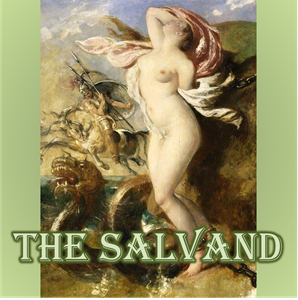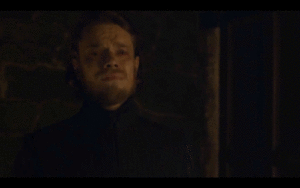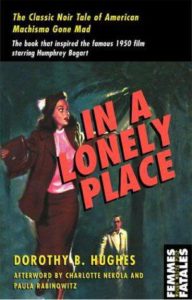 The Damsel-in-Distress is an intriguing trope, the female-gendered variation of the Salvand archetype, which is a character that needs saving. As the most prevalent expression of the Salvand, the Damsel not only informs our myth and literature, it embeds an insidious bias into our personalities, our culture, our politics. It’s a bias that corrupts our judgment, and thus our attempts at justice, like no other archetype.
The Damsel-in-Distress is an intriguing trope, the female-gendered variation of the Salvand archetype, which is a character that needs saving. As the most prevalent expression of the Salvand, the Damsel not only informs our myth and literature, it embeds an insidious bias into our personalities, our culture, our politics. It’s a bias that corrupts our judgment, and thus our attempts at justice, like no other archetype.
I’ve analyzed the Damsel before here, to show how it tricks us into perpetuating it by trying to save women from it. After all, the whole point of the Damsel is that “she” needs to be saved: trying to save women from the Damsel trope actually strengthens the Damsel trope. This ironic dynamic leads to a lot of head-desk moments, like when CBS’s Supergirl series failed the Bechdel Test‘s third bullet in a hook line intended to evoke girl power: “It’s not a bird, it’s not a plane, it’s not a man.”
Well, a few things have happened over the past couple of years that illustrate this principle neatly and deserve discussion, incidents involving a few of my genre favorites: fantasy (Game of Thrones), sci-fi (Fury Road), and hard-boiled fiction (In a Lonely Place).
Readers who know my writing know that I like strong female characters. The Damsel-in-Distress is a weak crutch that I disdain.
And, the Damsel bias undermines our ability to read fiction in a way that treats male and female characters equally. It leads us to interpret women in trouble as somehow more in need of someone to ride in and save them than men in trouble. Even when the trouble is in an aspect of life where men are scientifically shown to be generally less capable, like social and emotional skills. (We’ll get deeper into the science later.)
For example, there is a male version of the Salvand, most often seen in romantic flicks, the relatively unexamined Emotionally Stifled Dude. As the Damsel often is physically trapped, he’s psychologically and socially trapped. This male Salvand needs to be saved by the socially and psychologically daring Manic Pixie Dream Girl, rather than by a physically daring Prince Charming.
Yet, due to the overwhelming sway the Damsel-Hero trope has over our psyche, critics have tended to read its gender inverse as being threatening to women. For example, critics often complain that the MPDG has no goals other than to save her male Salvand, but the same could be said of Prince Charming and his female Salvand. Even when the Salvand is an emotionally weak dude being saved by an emotionally powerful woman, we still see the woman as the victim! The bias is insidious.
SAY HELLO TO MY LITTLE TEST
To illustrate the Damsel bias, let me create a highly stereotyped scene:
She sighed and moved up beside him. The heat of the oven flashed in her face. “Here, let me.” She shook her head and took the spoon from his hand. “Watching a man try to cook a meal is like watching a dog try to play piano.”
Funny, huh? (It’s okay!) Now, let’s look at the same paragraph, with the gender stereotypes reversed:
He sighed and moved up beside her. The heat of the engine flashed in his face. “Here, let me.” He shook his head and took the wrench from her hand. “Watching a woman try to fix a car is like watching a dog try to play piano.”
Which one of those got you in the gut? Which one did you think was funny? My guess is that you smiled a little when the man was being treated dismissively and you cringed a little when the woman was being treated dismissively.
If not, congratulations! If so, that’s the Damsel bias, pulling strings in your head, telling you that women merit (and need) protection more than men.
And, for anyone who wants to bring up historical arguments justifying this difference in interpretation, I would simply say that the same powerful Damsel bias skews our view on history, misinterpreting a protective relationship between men and women—necessitated by the reproductive fulcrum of natural selection—as a suppressive one.
But, let’s get to those incidents I mentioned earlier, the scandals about Game of Thrones, Fury Road, and In a Lonely Place.
PAY NO ATTENTION TO THE MAN
BEHIND THE GENITAL MUTILATION
 After an episode of Game of Thrones last season in which the castrated Theon Greyjoy was forced to watch while Ramsay Bolton sexually assaulted Sansa Stark shortly after she said “I do” on their wedding night, Senator Claire McCaskill tweeted that she was “done” with the series. Others echoed the Senator’s invocation of the Damsel bias.
After an episode of Game of Thrones last season in which the castrated Theon Greyjoy was forced to watch while Ramsay Bolton sexually assaulted Sansa Stark shortly after she said “I do” on their wedding night, Senator Claire McCaskill tweeted that she was “done” with the series. Others echoed the Senator’s invocation of the Damsel bias.
The scene didn’t show the assault after Sansa had disrobed and lay herself on the bed. Instead it featured a close-up of the guy who, in a previous episode that the Senator apparently thought was perfectly acceptable, Ramsay had tied up, tortured, and sexually mutilated: Theon, who stood there weeping.
In a powerful scene this season, Sansa told Littlefinger that she could still feel Ramsay’s abuse in her body. I hope we don’t need to be reminded about the continuing trauma Theon feels from Ramsay’s abuse.
Compared to Sansa, Theon has been shown a far weaker character throughout the story, always coming out of the abuses heaped upon him more emotionally and morally mangled, while Sansa has become stronger. Recently before the scene in question, he was coerced by Ramsay to relive his betrayal of the Starks, the only family he ever knew, by apologizing to Sansa for murdering her brothers, something he hadn’t actually done.
Even more poignant, it was Sansa who pressured Jon Snow, one of the most powerful male characters in the series, into not giving into despair and retaking the North from the Boltons. She’s no Damsel. But, never mind all that evidence. By virtue of her gender, under the insidious Damsel bias, ignorant critics treat Sansa like the weaker character, more deserving of outraged protectiveness.
Incapable of escaping this sexist bias, which insults both men and women, the Senator was blinded to Theon’s suffering, even when it was shoved right into her face by that close-up shot.
FROM THEON TO THERON
 Uptight men’s rights activists have condemned the film Fury Road as a feminist propaganda piece. (To be fair, some have had a more measured response.)
Uptight men’s rights activists have condemned the film Fury Road as a feminist propaganda piece. (To be fair, some have had a more measured response.)
I was reticent to see the film, but it turned out to be a fun romp. Also, I’m a big fan of Charlize Theron and have seen how well she has handled a strong female characters in films from Monster to Hancock to Snow White and the Huntsman, the last of which is a crapfest in which her admirable attempt to overcome amateurishly written dialog is the only saving grace of the film.
However, I have read the back story of how Theron was cast in Fury Road. Apparently, the writers began with a story about a group of enslaved women who needed to be saved, and didn’t want to pen another tale where a man rides in to save women. Instead of just getting rid of these Damsel characters, however, they decided to ride in and save the Damsel demographic by casting a woman as the savior.
Tricky, tricky trope.
See, the core of the Damsel is not that a man saves the woman. The core of the Damsel is that the woman needs saving by someone else. It’s the same bias that leads us to not even call it “rape” when a woman forces penetrative sex on a man. Women are weak and need saving, the trope tells us. Men are strong and don’t need saving. There’s a reason I use the word “insidious” to describe this bias.
Attempting to save women from the Damsel trope by making the “someone else” who saves the Damsel characters also a woman doesn’t really change the core bias of Woman = Salvand, particularly since the attempt to selectively save women from the threat of stereotypes is itself is an expression of the instinct to ride in to women’s salvation.
Essentially, Fury Road‘s writers fell into the same archetypal trap Neil Gaiman did when he rewrote the Sleeping Beauty myth in The Sleeper and the Spindle. As I described his ironic effort earlier:
Once upon a time a man said “women in stories shouldn’t need a man to rescue them!” To prove his point, this man wrote a story to rescue women from stories in which women needed a man to rescue them.
Had the writers of Fury Road not started with a gaggle of Damsels, none of their narrative contortions would have been necessary. Again, the Damsel tricked the writers into perpetuating the Damsel dynamic by fooling themselves into thinking they were undermining it while they were, in fact, acting on it.
IN A LONELY PLACE
 My meta-fiction novel, All the Seas and Rivers, is a play on genre stereotypes, particularly those of hard-boiled, Old West, and martial arts fiction. The chapter titles are plays on classic works in those genres. One of the chapters is named “In a Lovely Place.” This title is both a wink at lyrics from the classic Eagles song Hotel California (the chapter’s setting is a hotel in a fictionalized California) and a reference to the classic Dorothy Hughes mystery, In a Lonely Place.
My meta-fiction novel, All the Seas and Rivers, is a play on genre stereotypes, particularly those of hard-boiled, Old West, and martial arts fiction. The chapter titles are plays on classic works in those genres. One of the chapters is named “In a Lovely Place.” This title is both a wink at lyrics from the classic Eagles song Hotel California (the chapter’s setting is a hotel in a fictionalized California) and a reference to the classic Dorothy Hughes mystery, In a Lonely Place.
Hughes’s remarkable hard-boiled masterpiece has become a sort of grinding axe of feminist propaganda, which reads it as a critique of innate male misogyny and violence. Never mind that most of the men in the story are trying to stop the guy who is killing women, and demonstrating intense concern for and agony over the danger to the women in the story. The foregone conclusions (i.e., prejudices) of partisan politics show little respect for the evidence at hand.
Throughout “In a Lovely Place” is a conscious engagement with gender stereotypes that both tips a hat to Dorothy Hughes’s genius examination of gender tropes and—I hope!—works to show how these stereotypes are not hard-and-fast rules that define gender relations.
At one point, the detective narrator of All the Seas and Rivers encourages a bellboy in his flirtation with the girl who runs the hotel elevator by telling him to flash a heavy tip as a way of showing he’s a “man of means.” The central role of wealth in a man’s attractiveness to women (if you find this offensive, eat the science) is also key to Hughes’s novel.
But, the narrator of All the Seas and Rivers opines to himself after the boy thanks him:
Don’t thank me too soon, kid; no guarantee it would work in her case. Men and women might each have their own little tendencies, sexual trends and conventions, but a trend is not a formula.
Later in the same chapter, the narrator’s female client openly manipulates him by dangling a heavy fee as a way of showing that she’s a woman of means, reversing the “man of means” dynamic. And, she demands they be equal partners in the investigation, despite the client-hire relationship. She’s looking to hire him to help, but she’s no Damsel-in-Distress. Trope overturned.
But, let’s get back to how the Damsel bias sabotages feminist analysis of In a Lonely Place. Feminists see in the novel a critique of violent male supremacism. Let’s see how Hughes herself deals with the issue of equality, the only time she uses the word in her novel:
“Who are you?” she demanded.
He smiled slightly. “I’m Dix Steele.” In turn, demanded, “Who are you?”
She wasn’t accustomed to being given her own treatment. She didn’t know whether she liked it. She tossed back her autumn hair and waited, her eyes watching him. And then accepted his equality. “Laurel Gray.”
In the world Hughes is creating (or reflecting?) the presumption is that men and women are not equals, but not the way feminist critique portrays it. The woman is unaccustomed to “being given her own treatment.” Men have to prove their equality to women. Only the woman can consent to this equality. This isn’t a male-dominated, patriarchal dynamic. This is a female-dominated dynamic in which the man is jumping through social hoops, forced to perform to prove his worth.
But, it is still a story about a man who murders women. Activists have seen it as a critique of misogyny, of how patriarchal men hate women and favor men. This paranoid nonsense has been disproven by social research. But let’s take a look at what the author specifically says about who the killer hates, at the end of chapter five:
He smiled. She didn’t know that behind that smile lay his hatred of Laurel, hatred of Brub and Sylvia, of Mel Terriss, of old Fergus Steele, of everyone in the living world…
Just like Senator McCaskill ignoring Theon to focus on her perceived Damsel (the strong Sansa Stark who is anything but a Damsel-in-Distress), feminist critics of In a Lonely Place somehow miss all the men Dix Steele hates. He kills (mostly) women not because he hates them, but because he is heterosexual and his murderous rage is driven by his social weakness, his failure to succeed at creating and maintaining sexual rapport with women.
This isn’t to justify his crimes, of course. But, seeing misogyny in his behavior would be as inane as seeing self-loathing misandry in a homosexual serial killer like Jeffrey Dahmer who kills only men.
In fact, the title of Hughes’s novel says it all. The “lonely place” Hughes invokes with such remarkable empathy is the place Dix Steele finds himself because he was such a miserable failure at securing an equal relationship with a woman he loved more than any other. His reaction was desperate and brutal, and he is throughout the novel in a downward spiral of self-recrimination and self-destruction.
It’s the lonely place of someone who lacks the scientifically established superiority women enjoy at creating and maintaining social rapport. This is a gender distinction that begins in infancy, long before boys and girls can succumb to the pressures of socialization that feminists love to blame for all gender distinctions.
In a Lonely Place is fully aware of this innate gender difference in social skill; the character who first realizes that there’s something “wrong” with Dix is his friend Brub’s wife Sylvia. She’s the one who eventually outs him as the killer, despite all the male detectives trying to solve the murders. It’s a gender distinction Hughes recognized long before there was solid science behind it. It’s a distinction that actually makes women more successful at being criminals than men.
And, Dix Steele is ultimately a miserably unsuccessful criminal. His tale, which is punctuated with episodes of weeping and self-loathing, ends with him tearfully confessing his first kill.
Far from confirming the lame Damsel narrative of men imposing oppressive and socially constructed gender distinctions on weak women, In a Lonely Place confirms innate gender distinctions that put women in a place of power relative to men, power we’ve been socially conditioned to forget and ignore.
IT’S WE WHO NEED SAVING
FROM THE DAMSEL
Anyone who would deny this innate pro-female protective bias is in denial of clear facts. Males are treated far worse by the government than women who commit the same crimes. We obsess about male-on-female domestic violence and controlling behavior despite that women commit far more non-reciprocal domestic violence than men and have been found to be more controlling and aggressive in relationships.
This isn’t women doing this. Unlike feminists, I don’t want to vilify an entire class of human beings based on who they were born. After all, research also shows women are more critical of other individual women than men, despite a general in-group bias in favor of women as a class. The Damsel bias is a problem we all share, men and women alike, and if we seriously want to create healthy, happy, and scientifically sound gender relations, we need to save ourselves from the bias by confronting it.

PoliTuesday – Gender Power and Game of Thrones – J. Nelson Leith
June 28, 2016 at 9:57 am
[…] addressed how insidious gender stereotypes can be, particularly in regard to how the Damsel Bias has corrupted so much debate about fiction like Game of Thrones. Since I’ve griped about sexist bias in the criticism of the show, I feel I should […]